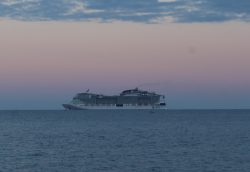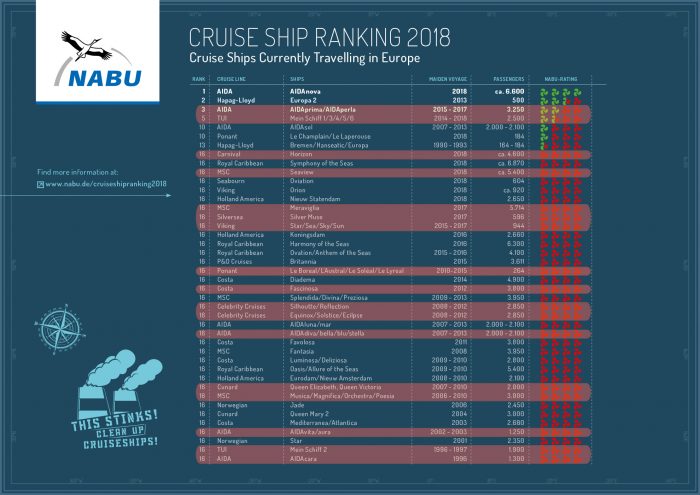Cruise ships visiting Malta with the worst category ranking for environmental impact in terms of emissions, are expected to see an increase of almost double by the end of the year.
The shocking number has been revealed on the Cruise Ship Ranking list for 2018, compiled by BirdLife Malta’s German partner NABU (The Nature and Biodiversity Conservation Union) as part of the ongoing joint Together Against Air Pollution from Ships project. Ships placed in this category (rated with four red propellers in the attached graphic), are categorized as having the most harmful impact on the environment, health and climate in comparison to other cruise liners.
Annual Cruise Ship Ranking for 2018 reveals most companies continue to use harmful fuels
In 2017, the number of ships with this ranking visiting Malta was 65, while so far this year, the number is already at 58 cruise liners for the worst category. This number will rise up to 112 port calls by the end of this year according to the Valletta Cruise Port schedule for 2018, almost double the amount of cruise ships in this category in comparison to 2017.
The full list includes a breakdown of cruise ship operators traveling in European waters and classifying their vessels according to their efforts in cutting pollution.
The findings also show that just one newly built cruise ship has renounced to the use of polluting HFO as fuel in exchange for cleaner less polluting fuel. AIDAnova will be the first cruise ship using Liquified Natural Gas (LNG), whilst giants such as MSC Cruises, Carnival Cruise and Royal Caribbean persist in the use of Heavy Fuel Oil (HFO) while operating, without mitigating their contributions to air pollution. The AIDAnova is however not scheduled to call at the Port of Valletta for 2018.
Janina Laurent, Policy Officer at BirdLife Malta, stated: “All cruise liners calling at the Port of Valletta are largely categorized in the worst category based on their environmental performances of emissions. Only five ships entered Maltese territorial waters so far in 2018 with an SCR-Catalytic System and a scrubber, which filters exhaust, is always in use even outside Sulphur Emission Control Areas (SECA). Creating incentives for instance in the form of ecological port fees to attract ships with less polluting technologies to Malta would help improving poor air quality levels in the harbour region. This means that ships pay their port fees depending on their environmental performance and cleaner ships have to pay less port fees than other ships.”
Alongside NABU, BirdLife Malta reiterates that LNG is not the salvation for the shipping industry, as it is still a fossil fuel. A shift in the shipping industry towards a drastic reduction in shipping emissions is necessary in order for the climate goals set under the Paris Agreement to be accomplished.
Read the Maltese version of the press release here. Click here for the Cruise Ship Ranking 2018 (also reproduced below) and here to read NABU’s official press release announcing the ranking earlier this week in Germany.


